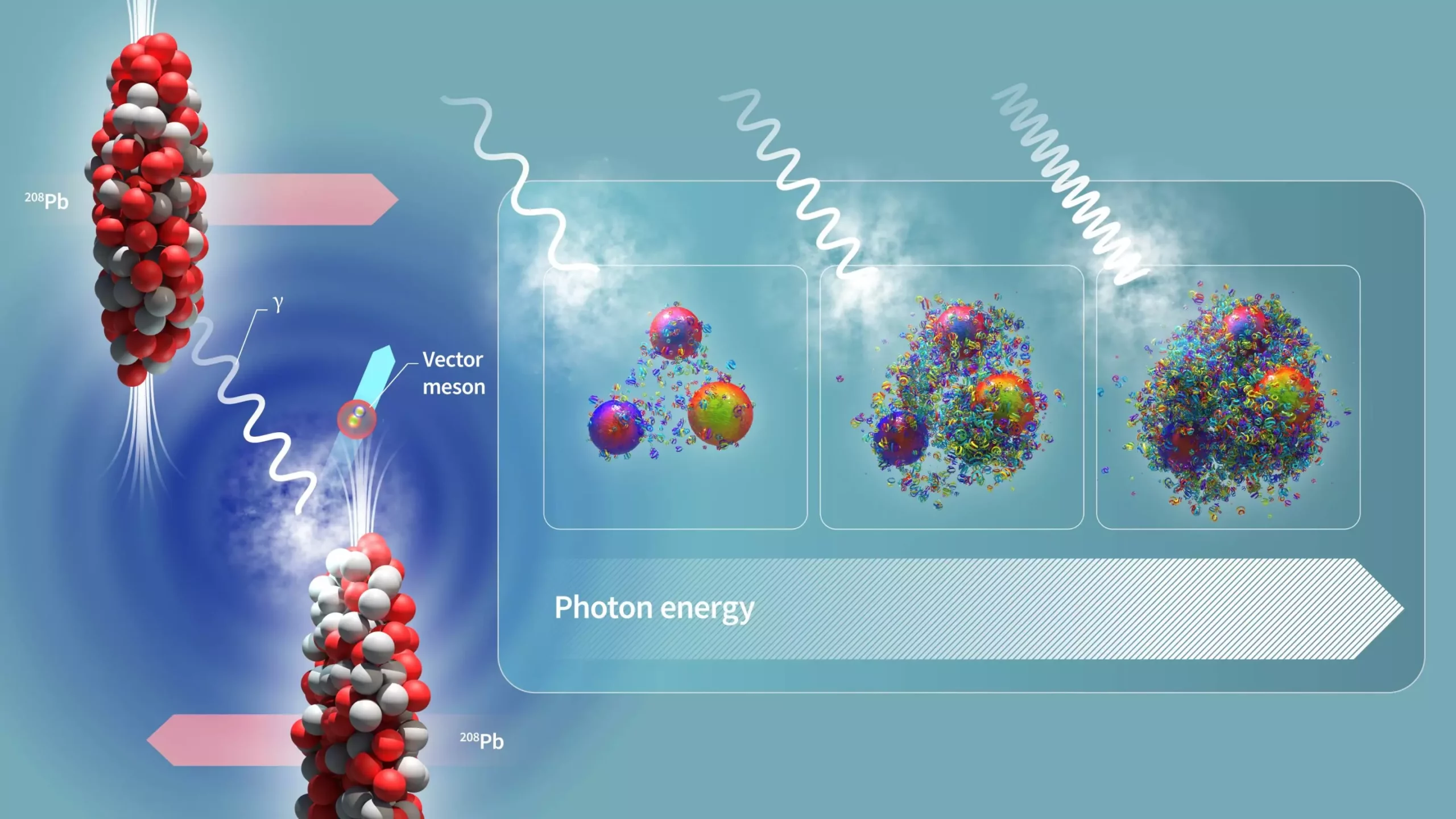The field of particle physics is continually advancing, and the Large Hadron Collider (LHC) plays a vital role in this pursuit. Among its many intriguing phenomena, the LHC explores the interactions between highly energetic proton and lead beams, which produce a flux of photons as they travel through the accelerator. Recently, the ALICE collaboration, a group of scientists dedicated to studying the inner structure of protons and nuclei, presented new findings on photon collisions at the LHCP 2023 conference. In this article, we will delve into the significance of these collisions and their potential to unlock further insights into the fundamental nature of matter.
Photons, as particles of light, serve as ideal tools for investigating the interior of nuclei. When a photon collides with a nucleus, it triggers the exchange of force carriers called gluons, which are responsible for the strong interaction. This exchange leads to the production of a quark-antiquark pair, revealing essential information about the nucleus’s composition. Scientists classify the collisions into two types: coherent and incoherent. In a coherent collision, the photon interacts with the entire nucleus, whereas in an incoherent collision, the photon interacts with a single nucleon within the nucleus.
Within nuclei, researchers strive to identify high numbers of gluons, as they indicate a high level of gluon density. Theoretical models suggest that as nuclei approach the speed of light, the gluon density inside them increases. Once the density reaches a certain threshold, the nucleus becomes saturated with gluonic matter, meaning that the number of gluons cannot increase further. Observing gluonic saturated matter directly poses a significant challenge in the field of strong interactions, but it promises valuable insights into the inner structure of protons and nuclei.
The production of a charm quark-antiquark pair in a photon—nucleus collision is known as J/ψ meson production. Scientists study how coherent J/ψ production varies with photon energy to detect gluon saturation effects. As the photon energy increases, it becomes easier to detect the presence of gluonic matter within the nuclei. The recent findings from the ALICE collaboration, which are based on data from LHC Run 2, significantly expand upon previous measurements from Run 1, covering a broader range of momentum. These results align remarkably well with the predictions of gluon-saturation models, affirming our growing understanding of this phenomenon.
In addition to coherent collisions, incoherent collisions provide valuable insights into the quantum fluctuations in the internal structure of protons. The ALICE collaboration accomplishes this by examining the distribution of momentum transferred to the J/ψ meson. In a recent study, the collaboration successfully demonstrated that accurately describing this momentum transfer necessitates including areas of saturated gluonic matter called gluonic hotspots in the models. These findings shed light on the fascinating intricacies of the proton’s internal dynamics and contribute to our deeper comprehension of quantum phenomena.
The ALICE collaboration plans to continue investigating these phenomena in the upcoming LHC Runs 3 and 4. With higher precision measurements and larger data samples, they aim to develop even more powerful tools for understanding the role of saturation and gluonic hotspots in protons and nuclei. These ongoing efforts offer great promise in unraveling the fundamental nature of matter and expanding our knowledge of the universe.
The world of particle physics is awe-inspiring, and the study of photon collisions at the Large Hadron Collider opens up new frontiers of understanding. Through coherent and incoherent collisions, scientists gain insights into gluon density, gluon saturation effects, and quantum fluctuations within protons and nuclei. The recent findings presented by the ALICE collaboration at the LHCP 2023 conference provide further evidence supporting our understanding of these phenomena. As we continue to push the boundaries of scientific exploration, we eagerly anticipate the discoveries that lie ahead in the fascinating realm of particle collisions.


Leave a Reply